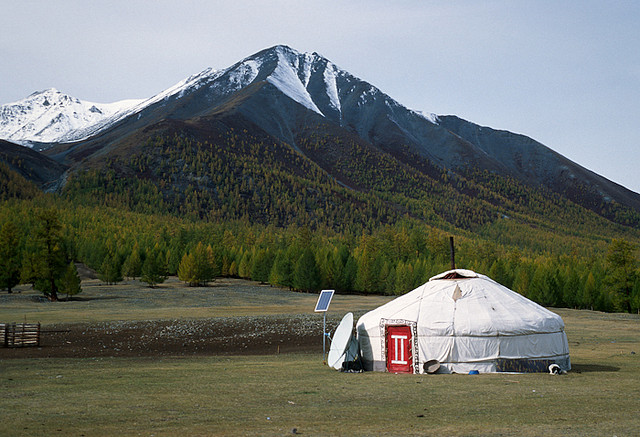The western part of Mongolia is the most beautiful, but the least travelled destination. It is home to the world rare wild species, numerous ethnic groups and snow capped majestic mountains. Altai Mountains are the highest among Mongolian mountains and the richest in endangered wild animals such as ibexes, snow leopards, altai snowcock and Argali wild sheep those are considered the biggest in body size in the world. The Altai Mountains have 20 km long, 5 km wide Potanina stunning glacier. Majestic mountains of China and Russia are visible after 3 hours climbing. On the way to western Mongolia, there are most scenic places of Mongolian three distinct natural zones such as arid, vast-open Gobi desert, forested mountains of Khangai mountain range and central Mongolian rolled hills. Altai area is a place where many ethnic groups inhabit including Kazakhs, Tuva, Torguud and many others. The Kazakhs are the Muslim people with Turkic origin, keeping completely different customs, strict tradition and religion.
The main attraction of this region is Khoid Tsenkher cave. This cave is dated back 20 000 -30 000 years ago, is considered classic evidence of Upper Paleolithic period. Many symbols and animals painted with rosy and brown colors deep inside the cave is very famous as petroglyph in the world. Uvs nuur basin, covering area of 1.068.853 is the northern most of the enclosed basins of Central Asia. The basin is named after Uvs lake, large and salt water lake which is important place for migrating birds and shore birds. The site is made up of 12 protected areas representing the major biomes of eastern Eurasia. The steppe ecosystem supports a rich diversity of birds and the desert is home for many animals. The mountains are important refuge for globally endangered snow leopard, argali and ibex.
Top 10 Attractions
• Mongolian Throat singing
• Altai 5 Peaks National Park
• Khoid Tsenkher cave
• Buurug del sand dunes
• Uvs lake
• Kazakh culture
• Shuden Salt mountains
• Khar us lake
• Rock painting in Tsagaan Salaa
• Khoton Khurgan lakes

